This article was co-authored by Chris M. Matsko, MD. Dr. Chris M. Matsko is a retired physician based in Pittsburgh, Pennsylvania. With over 25 years of medical research experience, Dr. Matsko was awarded the Pittsburgh Cornell University Leadership Award for Excellence. He holds a BS in Nutritional Science from Cornell University and an MD from the Temple University School of Medicine in 2007. Dr. Matsko earned a Research Writing Certification from the American Medical Writers Association (AMWA) in 2016 and a Medical Writing & Editing Certification from the University of Chicago in 2017.
This article has been viewed 209,671 times.
Dehydration is a very real concern when someone is suffering from food poisoning and the body naturally tries to flush out the toxins through diarrhea and vomiting. Take steps at home to stay hydrated and control the symptoms. Severe cases of food poisoning, and related conditions generally termed gastroenteritis, may require medical attention to prevent complications from prolonged dehydration.
Steps
Replenishing the Fluids You Are Losing
-
1Handle the symptoms at home. Most cases of food poisoning can be handled at home. Symptoms can begin within hours and last for hours or days and even longer in some cases.[1]
- Mildly contaminated foods, or some types of contaminants, may not cause the symptoms to start for several days, or even longer. When the onset of symptoms is delayed, the duration of the problem can last for days to weeks.
- Chronic symptoms should be promptly evaluated by a doctor especially if you are having hematemesis or hematochezia, which is bloody vomit or diarrhea, respectively.
- The symptoms of food poisoning include nausea, vomiting, watery diarrhea, abdominal pain and cramps, sweating, and fever.
-
2Sip on water. You may want to let your stomach settle for an hour or so, but then you need to start introducing fluids to prevent dehydration. Take small sips of whatever liquid you can most easily tolerate, and continue to drink as much as possible throughout the day.[2]
- Sip on water or suck on ice chips. Taking small sips of water may help calm nausea and will provide your body with a small and steady dose of this essential liquid.
- If your stomach is not ready for liquid, then try putting ice chips in your mouth and let them dissolve.
- Try sucking on a ginger candy or drink some ginger tea. Ginger can help with digestion and treat stomach upset, diarrhea, and nausea.
Advertisement -
3Take sips of a sports drink that contains electrolytes. Diarrhea and vomiting also cause your body to lose essential electrolytes. A good way to replace the lost electrolytes is to sip on a caffeine-free sports drink (not an energy drink) once you can hold it down.
- Other products are available for adults and children that help to replenish fluids and restore electrolytes. These products are called electrolyte replacement drinks.
- Types of sports drinks include Gatorade and Powerade, to name a few. Talk to your doctor or pharmacist for a specific recommendation.
-
4Try clear carbonated sodas. Sometimes a little carbonation may actually help reduce symptoms of nausea.
- Try sipping on ginger ale or other clear carbonated beverages over ice.
-
5Introduce clear broth when ready. Sip on clear broth, such as chicken, vegetable, or beef, once your stomach has settled enough and you are not likely to trigger the nausea and vomiting.[3]
- Starting with broth is a good way to help replenish fluids and begin to introduce nutrients back into your body.
- Move on to foods that are bland, low-fat, and easily digested. Some examples include saltine crackers, toast, and gelatin. Back away from these solid foods if your nausea returns.
-
6Avoid fluids that contribute to dehydration. Some beverages should not be used while are trying to restore the fluids you lost during your illness. Some liquids pull water from your body tissues and contribute to the problem of dehydration.[4]
- Alcoholic beverages are not to be used while you are still sick.
- Avoid caffeinated beverages including coffee, tea, colas, or energy drinks.
- Fruit juices and fruit drinks contain carbohydrates, are low in sodium, and may aggravate your upset stomach.
- Avoid dairy products and spicy drinks or foods until you are feeling better.
Monitoring Your Condition
-
1Recognize the signs of dehydration. When you contract food poisoning, or develop any other form of gastroenteritis, the symptoms of the condition can cause dehydration to occur very rapidly. You can become dehydrated within 24 hours if you are unable to retain any liquids and the symptoms continue.[5]
- The signs of dehydration include fatigue, loss of appetite, flushed skin, poor skin turgor, heat intolerance, light-headedness, dark-colored urine, and a dry cough.
- Clearly some of the signs can be difficult to determine since many overlap with the symptoms of food poisoning.
- In some cases, food poisoning can be severe or caused by a toxin so dangerous that professional medical attention is essential.
- An example of this is B Cereus infection, which secretes a toxin that creates gastrointestinal distress. This commonly occurs after you eat infected fried rice.[6]
- Watch for warning signs to determine whether you need immediate care for your dehydration.
-
2Monitor the color of your urine. Dark yellow or brownish urine can be a sign of serious dehydration.
- If you do not urinate at all or produce very little urine of a dark color, seek emergency care for your food poisoning.
- Dehydration also causes significant weakness and fatigue. If you are so weak you can barely move or if you are so tired you can hardly stay awake despite adequate sleep, you may need medical attention.
- You should consult a medical professional well before you have symptoms such as extreme weakness and problems sleeping. The doctor will be able to give you fluids to resuscitate you.
-
3Take over-the-counter products. The only helpful product available over-the-counter is loperamide, which is made to help to manage the diarrhea. Dehydration is a result of frequent vomiting and persistent watery diarrhea. The diarrhea is your body’s way of getting rid of the unwanted toxins that are causing the stomach problems. If you can endure it, let your body do its job.
- However, if the watery diarrhea is continuing, then it is also contributing to your poor hydration status. At some point you have to determine if you want to slow the process by using the loperamide which can help to prevent dehydration.
- Loperamide should be taken as follows: 4 mg, followed by 2 mg after each loose stool. Chronic use of loperamide is not recommended.
Seeking Medical Attention
-
1See a doctor. If the food poisoning symptoms persist for more than two 48 hours, are severe, or are complicated by other factors, then see your doctor as soon as possible or go to an emergency room or urgent care facility.[7]
- Complicating features can include age. Food poisoning in infants, young children, and the elderly warrants prompt medical attention.
- Also, people that have other medical conditions that require a stable situation and the ability to take their medications on a regular basis may need medical attention to recover from food poisoning as quickly as possible.
-
2Identify severe symptoms. Sometimes the symptoms progress beyond the basic initial symptoms and can lead to medical complications if access to appropriate medical care is delayed. Examples of more severe symptoms include the following:[8]
- Persistent episodes of vomiting and the inability to keep any liquids down for more than one or two days
- Bloody vomit or blood in the stools
- Diarrhea for more than three days
- Extreme pain or severe abdominal cramping
- A temperature higher than 101.5F when taken orally
- Neurological changes such as blurred vision, muscle weakness, and tingling in the extremities
- Dizziness, lightheadedness, and severe weakness
- Unresolved signs of dehydration which include excessive thirst, dry mouth, little or no urination, and very dark colored urine
-
3Prepare for your treatment at a medical facility. Hospitals and other facilities will proceed quickly with trying to restore your fluid balance and resolve the dehydration. They may also do tests to determine the cause of the symptoms and prescribe treatments to help the symptoms resolve.[9]
- An IV will be started to provide resuscitation of fluids and electrolytes you have lost during your episodes of vomiting and diarrhea.
- If you are still nauseous and have diarrhea, medications may be given through the IV line, such as odansetron for severe nausea, to help you feel more comfortable.
- Blood tests will be performed to establish the severity of your condition.
- Additional tests may be done to attempt to determine the source of the contamination. This may or may not be possible.
- Some types of food poisoning, for example listeria contamination, may require antibiotics to treat your condition.
- If you are pregnant, prompt treatment may help prevent exposure of the contaminant to the baby.
-
4Consider possible sources of contamination. It may prove helpful if you know what you ate that caused the problem. Some examples of possible contaminants that have an onset of symptoms within hours after ingestion are listed below.[10]
- Clostridium botulinum: symptoms begin in 12 to 72 hours, and examples of possible methods of contamination include home-canned foods, improperly canned commercial foods, smoked fish or salted fish, potatoes baked in aluminum foil, or other foods kept at warm temperatures for too long.
- Clostridium perfringens: symptoms begin in 8 to 16 hours, and possible sources include meats, stews, gravies, and foods served in dishes that fail to provide adequate heat or food is chilled too slowly.
- Listeria: symptoms begin in 9 to 48 hours, and possible sources include hot dogs, luncheon meats, unpasteurized milk and cheeses, unwashed raw produce, and possibly spread through contaminated soil and water.
- Noroviruses: symptoms begin in 12 to 48 hours, and possible sources include raw, ready-to-eat-produce, shellfish from contaminated water, and spread by an infected food handler.
- Shigella: symptoms begin in 24 to 48 hours, and possible sources include seafood, raw ready-to-eat produce, and can be spread by an infected food handler.
- Staphylococcus aureus: symptoms begin in 1 to 6 hours, and possible sources include meats, prepared salads, cream sauces, cream-filled pastries, and can be spread by hand contact, coughing, and sneezing.
- Bacillus Cereus: Disease occurs within 24 hours of consumption. Usually diarrhea or nausea results from eating rice contaminated with the toxin, but this condition can be from consumption of dairy products, bean sprouts, spices, and other vegetables. Treatment involves supportive measures, while antibiotics are usually not necessary.[11]
-
5Be aware of contaminants that take longer for symptoms to develop. Symptoms of food poisoning often develop rapidly but some sources of contaminants can lead to a delayed presentation making it difficult to identify the source.[12]
- Campylobacter: symptoms begin in 2 to 5 days, and sources include meat and poultry, with contamination occurring during processing procedures as animal feces come in contact with meat surfaces. Other sources include unpasteurized milk and contaminated water.
- Escherichia coli: symptoms occur in 1 to 8 days, and common sources include beef contaminated with feces during slaughter, undercooked ground beef, unpasteurized milk, apple cider, alfalfa sprouts, and contaminated water.
- Giardia lamblia: symptoms begin in 1 to 2 weeks, and common sources include raw ready-to-eat produce, contaminated water, and can be spread by an infected food handler.
- Hepatitis A: symptoms begin in about 28 days, and are caused by raw ready-to-eat produce, shellfish from contaminated water, and can be spread by an infected food handler.
- Rotavirus: symptoms begin in 1 to 3 days, common sources include raw ready-to-eat produce, and can be spread by an infected food handler.
- Vibrio vulnificus: symptoms begin in 1 to 7 days, and sources include raw oysters, raw or undercooked mussels, clams, and scallops, and can be spread through contaminated seawater.
-
6Prepare foods using freshly cleaned utensils. Keep in mind that a problem called cross-contamination can sometimes occur.[13]
- This involves preparing foods that are to be consumed raw, like salads, vegetables, or other produce, that may have been contaminated by exposure to a surface that was exposed to raw meat or fish.
- Examples of utensils or surfaces that can be contaminated include cutting boards, especially wooden style boards, and knives or shredding devices that were not effectively cleaned prior to use.
Expert Q&A
-
QuestionMy mother has been to the hospital for dehydration. She is still feeling bad and can hardly eat. She is going to make a doctor's appointment to get more help. She drinks liquid like water and Gatorade but not much food. What else might help?
 Chris M. Matsko, MDDr. Chris M. Matsko is a retired physician based in Pittsburgh, Pennsylvania. With over 25 years of medical research experience, Dr. Matsko was awarded the Pittsburgh Cornell University Leadership Award for Excellence. He holds a BS in Nutritional Science from Cornell University and an MD from the Temple University School of Medicine in 2007. Dr. Matsko earned a Research Writing Certification from the American Medical Writers Association (AMWA) in 2016 and a Medical Writing & Editing Certification from the University of Chicago in 2017.
Chris M. Matsko, MDDr. Chris M. Matsko is a retired physician based in Pittsburgh, Pennsylvania. With over 25 years of medical research experience, Dr. Matsko was awarded the Pittsburgh Cornell University Leadership Award for Excellence. He holds a BS in Nutritional Science from Cornell University and an MD from the Temple University School of Medicine in 2007. Dr. Matsko earned a Research Writing Certification from the American Medical Writers Association (AMWA) in 2016 and a Medical Writing & Editing Certification from the University of Chicago in 2017.
Family Medicine Physician She needs to try some broth with crackers or bread, something bland. If the dehydration persists, I would recommend going to the ER over the doctor’s appointment.
She needs to try some broth with crackers or bread, something bland. If the dehydration persists, I would recommend going to the ER over the doctor’s appointment.
References
- ↑ https://www.niddk.nih.gov/health-information/digestive-diseases/food-poisoning/definition-facts
- ↑ https://www.niddk.nih.gov/health-information/digestive-diseases/food-poisoning/treatment
- ↑ http://www.mayoclinic.org/diseases-conditions/food-poisoning/basics/definition/con-20031705
- ↑ https://my.clevelandclinic.org/health/diseases_conditions/hic_avoiding_dehydration
- ↑ https://my.clevelandclinic.org/health/diseases_conditions/hic_avoiding_dehydration
- ↑ https://www.foodsafety.gov/poisoning/causes/bacteriaviruses/bcereus/
- ↑ http://www.mayoclinic.org/diseases-conditions/food-poisoning/basics/definition/con-20031705
- ↑ https://www.niddk.nih.gov/health-information/digestive-diseases/food-poisoning/symptoms-causes
- ↑ https://www.dignityhealth.org/sacramento/services/emergency-department/when-to-go-to-er/food-poisoning-treating
- ↑ http://www.mayoclinic.org/diseases-conditions/food-poisoning/basics/definition/con-20031705
- ↑ https://www.foodsafety.gov/poisoning/causes/bacteriaviruses/bcereus/
- ↑ http://www.mayoclinic.org/diseases-conditions/food-poisoning/basics/definition/con-20031705
- ↑ https://www.cdc.gov/foodsafety/keep-food-safe.html
About This Article
To stay hydrated if you have food poisoning, sip on water or suck on ice chips to replenish the fluids you’ve lost through vomiting or diarrhea. You should also try drinking ginger tea or sucking on a ginger candy, since ginger can help with digestion. If you feel up to it, have a sports drink without caffeine, like Gatorade or Powerade, to boost your electrolytes. In order to combat nausea, try drinking clear carbonated beverages, like ginger ale, which can help settle your stomach. When you feel your stomach has settled a bit, have some chicken or beef broth to start getting nutrients back into your body. Make sure to see a doctor as soon as possible if your food poisoning symptoms last longer than 48 hours. For tips from our Medical co-author, including what over-the-counter products you can try taking, read on!
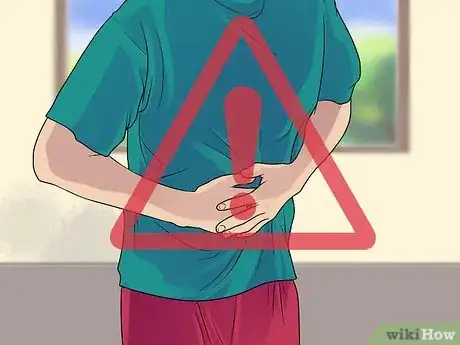


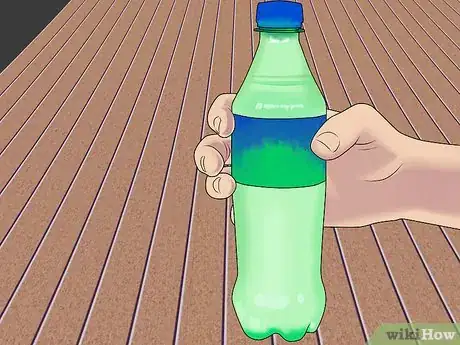

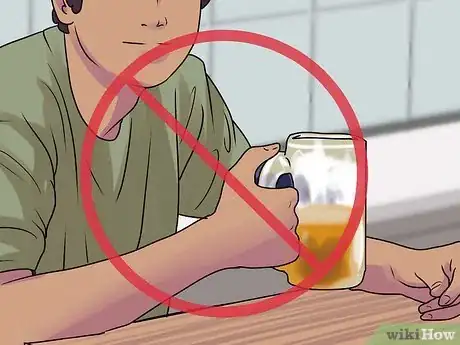
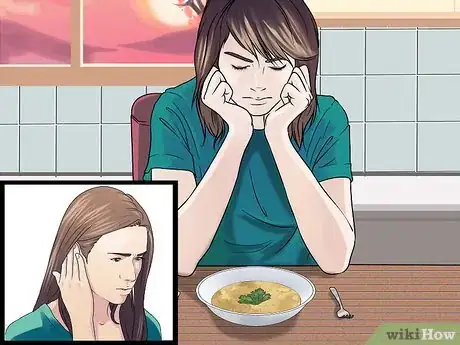
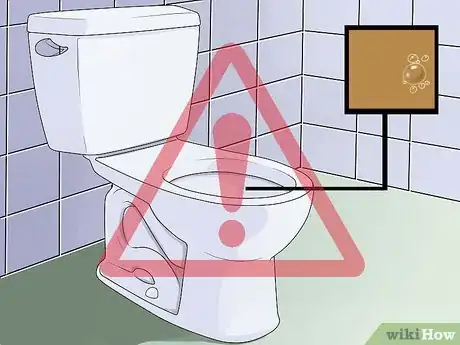
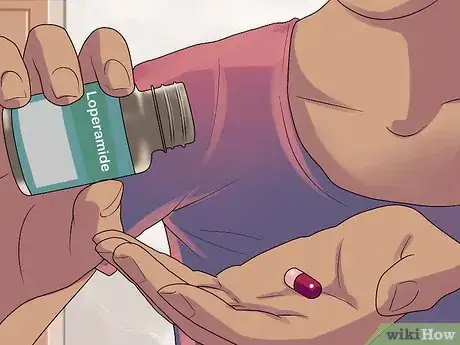



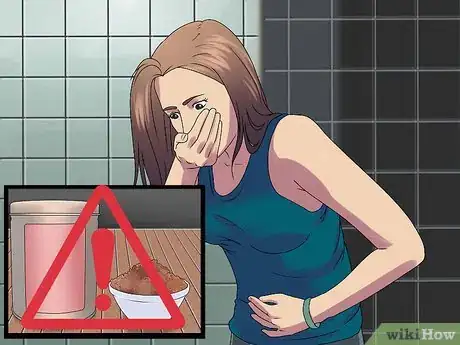
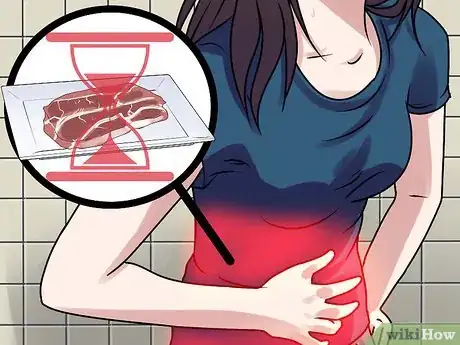
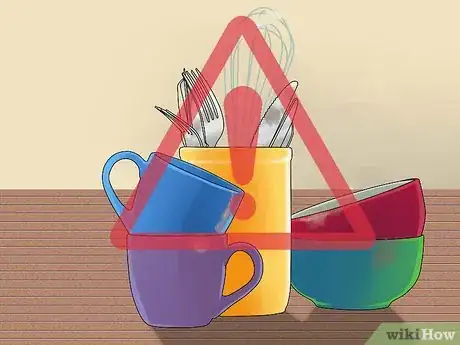


-Step-9-Version-5.webp)
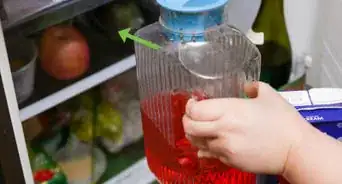

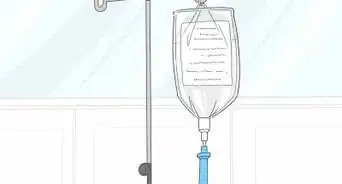

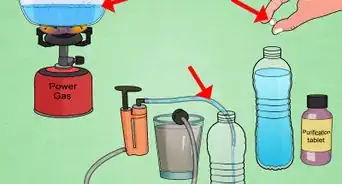









-Step-9-Version-5.webp)




































Medical Disclaimer
The content of this article is not intended to be a substitute for professional medical advice, examination, diagnosis, or treatment. You should always contact your doctor or other qualified healthcare professional before starting, changing, or stopping any kind of health treatment.
Read More...